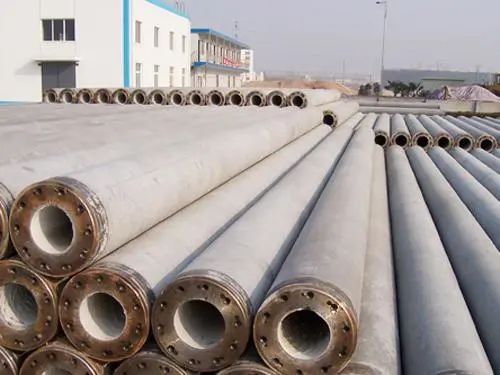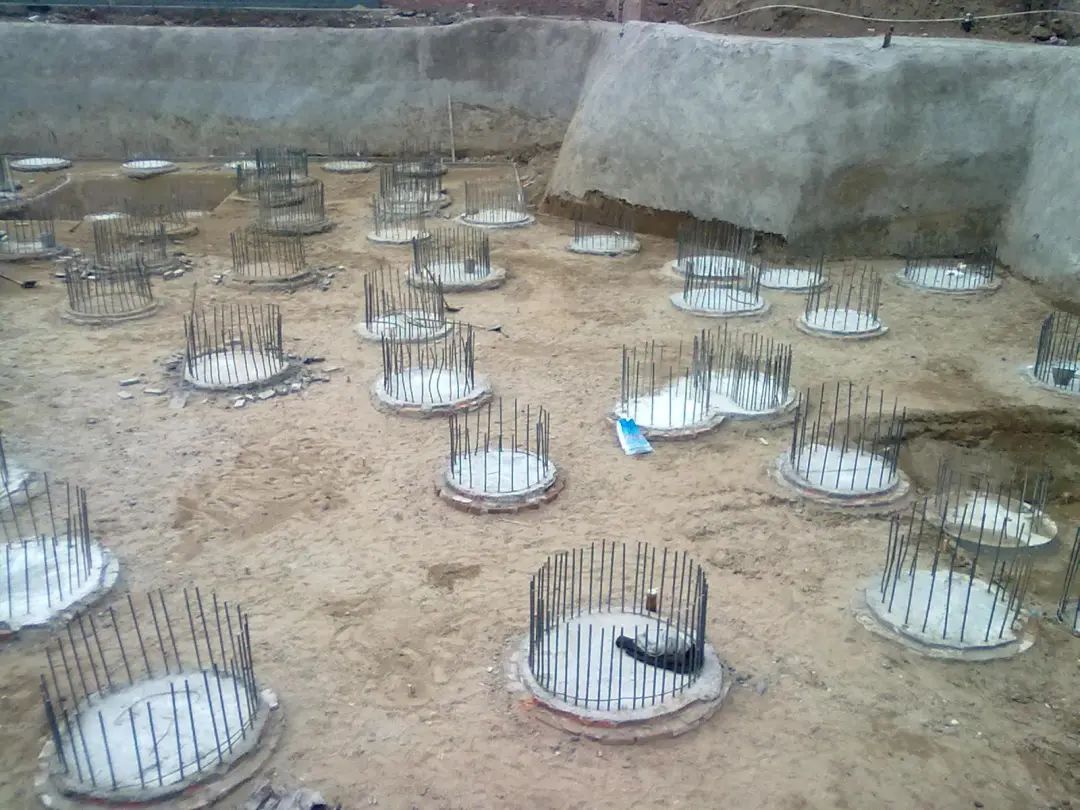The foundation refers to the structural components that transmit the various actions borne by the structure to the foundation. The foundation includes independent foundation, strip foundation, raft foundation, box foundation, thin shell foundation, sinking plate, sinking shaft, caisson, underground continuous wall and pile foundation. Pile foundation is a kind of deep foundation, which is composed of foundation pile and bearing platform connected to the top of pile. If the pile body is completely buried in the soil, and the bottom surface of the bearing platform is in contact with the soil, it is called low bearing platform pile foundation; If the upper part of the pile body is exposed to the ground and the bottom of the bearing platform is above the ground, it is called high bearing platform pile foundation. Building pile foundation is usually low cap pile foundation. Single pile foundation refers to an independent foundation that uses a pile (usually a large diameter pile) to bear and transmit the load of the superstructure (usually a column). Pile group foundation refers to a pile foundation composed of more than two foundation piles.
The foundation is the soil or rock mass supporting the foundation. Once the construction site is selected, the foundation form can be selected, but the foundation has no choice. Although it is not a part of the building, the quality of the foundation is directly related to the safety of the building and the project cost.
Pile refers to a single pile in the pile foundation, which is a cylindrical dowel member with certain stiffness and bending resistance that can be embedded in the soil to transfer the load of the building (vertical and horizontal) to the foundation soil (or rock stratum) in whole or in part. The cross-sectional dimension of the pile is much smaller than the length. The nature of the pile varies with the material of the pile body, the method of pile making and the cross-section size of the pile, and it has great adaptability. Generally, the pile we say refers to the foundation pile.
Classification of piles
According to bearing properties:
Friction pile
End bearing pile
Classification basis: According to the exertion degree of pile side and pile end resistance and the proportion of shared load.
① Friction pile: pile foundation pile in which the load is mostly borne by the friction of the soil around the pile, and the pile end resistance can be ignored.
② End bearing friction pile: a pile whose load is mainly borne by the friction of the pile body.
③ End bearing pile: most of the load is borne by the supporting force of the pile tip, and the pile side resistance can be ignored.
④ Friction end bearing pile: pile whose load is mainly borne by pile end resistance.
According to the construction method:
Precast pile
Cast in place pile
① Precast pile: various forms of piles made in the factory or construction site, such as hammering pile, vibrating pile, static pressure pile, etc.
② Cast in place pile: the pile position at the construction site is drilled mechanically or manually, and then concrete is poured into the hole. Such as hole digging, drilling, punching and explosive expansion of bored piles.

Precast pipe pile
 Cast-in-place pile
Cast-in-place pile
According to the influence degree of pile forming method on foundation soil:
Non compaction pile
Partially compacted pile
Soil compaction pile
① Non soil squeezing pile: pile that has no soil squeezing effect on the adjacent soil during the pile forming process, such as bored (punching or digging) cast-in-place pile and prefabricated pile that is drilled first and then driven;
② Partially squeezed pile: slightly squeeze the soil around the pile, but the strength and deformation properties of the soil change little. Including impact bored cast-in-place piles, pre drilled driven precast piles, etc.
③ Soil compaction pile: during the setting process, the soil structure is seriously disturbed and damaged, which has a great impact on the strength and deformation properties of the soil. Solid precast piles, pipe piles with closed ends, wooden piles and immersed cast-in-place piles.
By pile diameter:
Small diameter pile (< 250mm)
Medium diameter pile (250-800mm)
Large diameter pile (> 800mm)
Classification by material:
Wood pile
Stone pile
Concrete (cement) pile
Reinforced concrete pile
Steel pile
composite piles
By function:
Vertical compression pile
tension pile
laterally loaded pile
compound pile
anchor pile
By section shape:
Round pile
Square pile
Polygonal pile
Irregular pile
DX pile
Principles to be followed in the selection of pile type
The selection of pile type must be subject to careful technical and economic analysis, and the following principles must be followed:
1. It must be adapted to geological conditions, adapted to local conditions, and selected in combination with geological conditions and local experience;
2. Select a suitable pile type to match the building structure;
3. Pile type selection and pile foundation engineering should conform to the basic national policy of resource-saving and environment-friendly;
4. The selection of pile type should focus on progressiveness under the same conditions and requirements, economy, efficiency, safety and meeting the requirements of project life;
5. The selection of a new type of pile must be tested by scientific experiments and engineering practice.
Common problems in pile type selection
1、All rock socketed piles are regarded as end bearing piles, which leads to the unnecessary expansion of the rock socketed depth at the pile end, increases the difficulty of pile formation, prolongs the construction period, and increases the project cost.
2、The use of immersed cast-in-place piles, rammed expanded piles and powder jet grouting piles without soil and slurry discharge in soft soil areas has insufficient understanding of the soil squeezing effect or construction quality control of such piles.
3、The concept that the quality stability of precast pile is higher than that of cast-in-place pile has led to many engineering accidents.
4、The habitual thinking of stable and reliable quality of manually dug piles is often inconsistent with reality. (the quality stability of unsaturated soil at low water level is high; the construction hidden danger of saturated soil at high water level is large, and the quality is questionable, especially when there is muddy soft soil interlayer, the risk increases)
5、The belled pile used in the end bearing cast-in-place pile with better bearing layer and shorter pile can obtain better technical and economic benefits.

